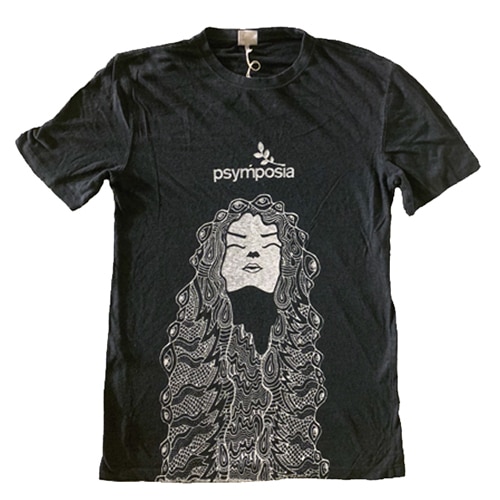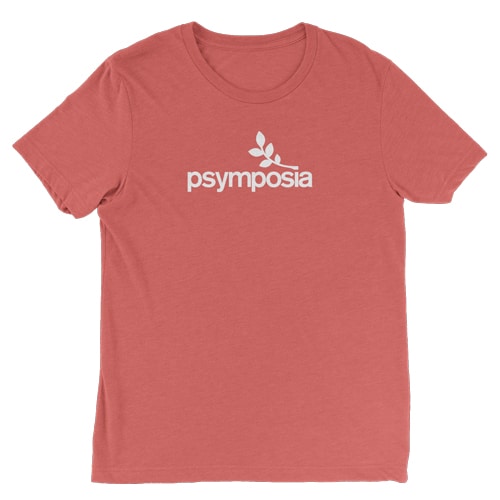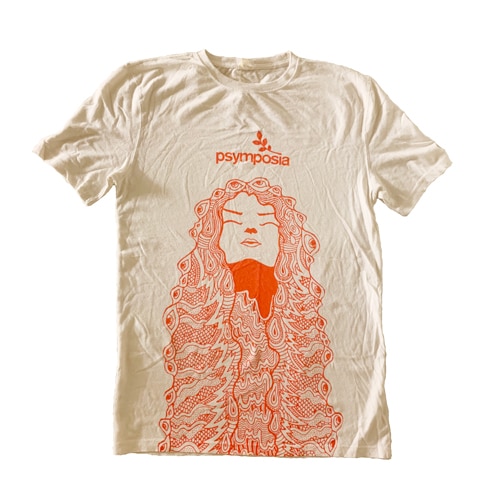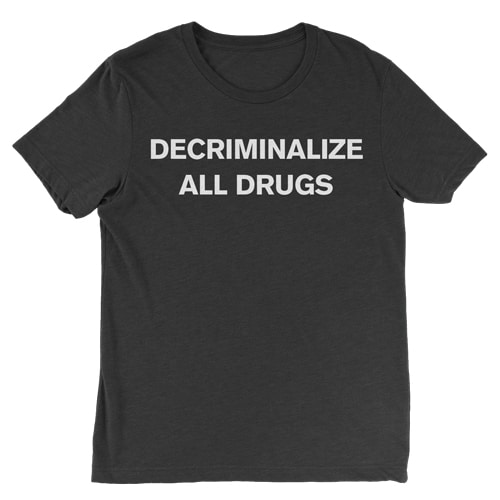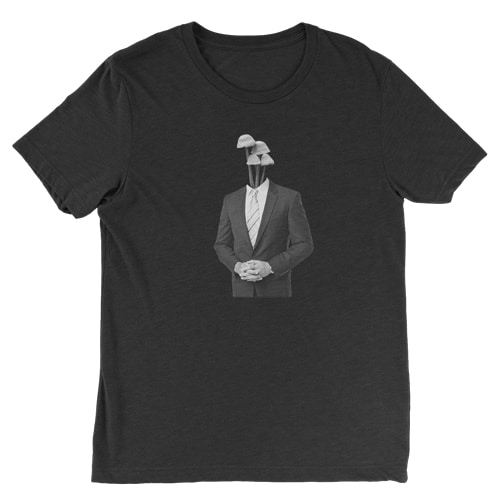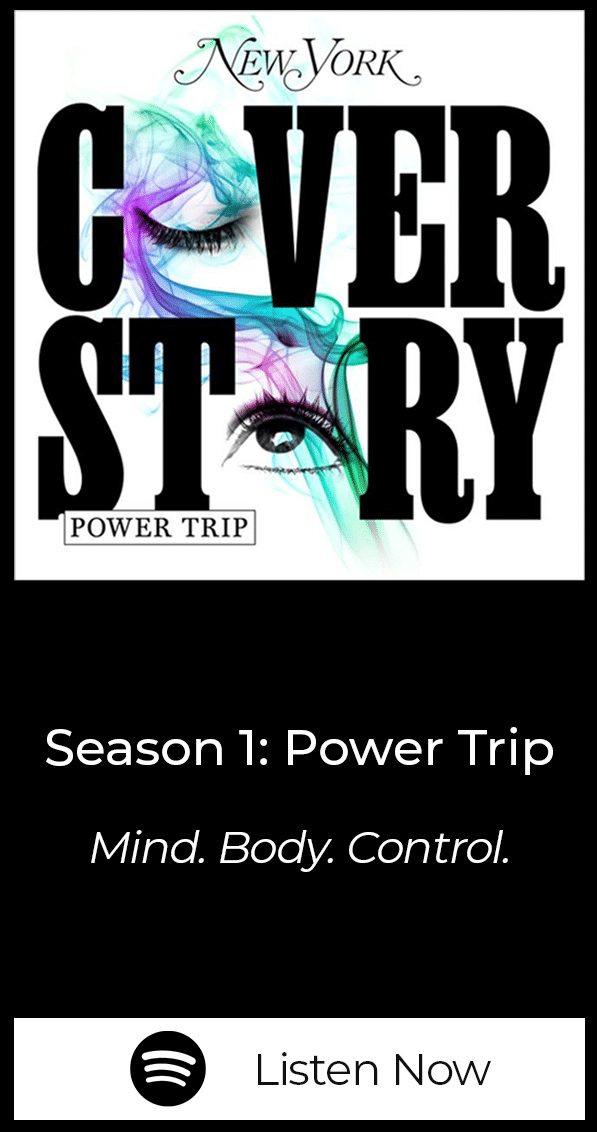Envisioning a Sensible Psychedelic Drug Policy
What if honest drug education, harm reduction, long term integration, and acknowledging risks, took the place of propaganda?
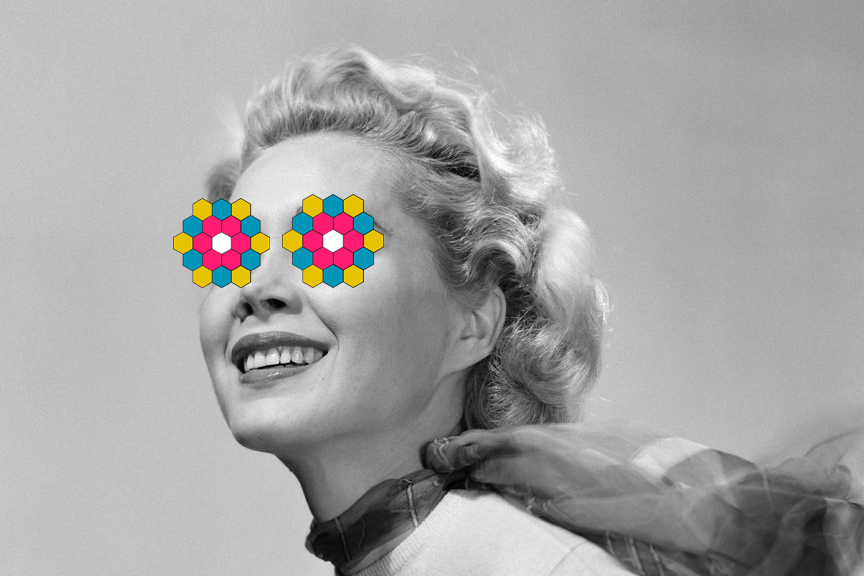
Psymposia is a 501(c)(3) nonprofit research and media organization that offers critical perspectives on drugs, politics, and culture. We rely on contributions from our readers and listeners. Your support is vital to sustaining Psymposia.
Support Psymposia’s independent journalism on Patreon and help us drive the Mystery Machine! We’re a bunch of meddling kids who are unmasking the latest shenanigans on the psychedelics beat.
Like it or not, psychedelic experiences can be dangerous both for those on the psychedelic and those around them. Changing the global dialogue regarding psychedelics requires us to cover the harm aspects as well.
As with any burgeoning movement, we run the risk of a naive optimism which not only fails to convince those not in the choir but perpetuates harmful drug use in our own communities by denying such harm exists, fighting prohibitionist propaganda with propaganda of our own. By all means, we should continue our efforts to promote the positive, immense benefits these tools have, but it’s equally important to get real about the potential hazards.
Utopianists exist on both sides of the drugs issue. Prohibitionists envision a drug-free society, and many psychedelic advocates envision one where every psychedelic drug experience is positive and where psychedelics function as panaceas for all of our problems. Few of us would suggest that a machete is good or bad. Most of us realize that a machete is a tool, and its goodness or badness comes from how it’s used. Why then do so many in both the psychedelic and prohibitionist worlds have such a problem evaluating drugs based on context of use?
That our experiences with psychedelics are in large part products of where we take the drug and where our minds are going into the experience, is a fact (rightly) hammered to death by every psychedelic proponent. Despite how obvious this is to most of us, and thus how tedious the discussion of set and setting may be for this audience, it remains ever more important as these tools make their way into the mainstream culture once again. This is largely because the whole notion of set and setting seems to baffle much of society, including many proponents of psychedelics who espouse “psychedelics as panaceas” thinking, and make statements like “there are no such things as bad trips” without any caveat about how harmful some can be.
One night back in college, a close friend ate a bunch of acid and proceeded to solve the God equation on his dormitory wall.
Luckily it was in pencil. I recall it being long, and ending in “1=1”. To be fair, a century earlier Bertrand Russell and Alfred North Whitehead took three volumes to prove nearly as much in their Principia Mathematica. This was perhaps more succinct, but would prove less influential. A noble failure nonetheless.
The experience unveiled for him metaphysical architecture that had, up to that point, remained hidden, but unveiled very little about himself. He would “come to” a day later, generally regretful. Wiping the equation from the wall with some embarrassment, the lesson he took away from the trip was that the psychedelic experience was a distortion of reality, seductive in its ability to convince one of the validity of his thoughts during this distortion. It’s an assessment few of us in the psychedelic movement want to hear.
Another friend gave an “eye-balled” bump of 2CP to someone he knew at a party.
2CP is a compound that its inventor Alexander “Sasha” Shulgin gives warning to in PHIKAL entry #36. “The need for individual titration would be most important with this compound,” Shulgin cautions.
After insufflating the powder, he proceeded to ramble incoherently, disrobe and stumble naked throughout his house, dislodging every lamp and seeming valuable from their locations to the floor—the sounds of breaking glass, bangings and the shouts and murmurs of other party guests providing the soundtrack of a night that finally ended with a licensed nurse succeeding in gently convincing him to remain seated on the couch after a three-hour struggle.
Had they taken these drugs with the desire to navigate and illuminate their psyches for the purpose of self-betterment, lying down, for instance, in a clinic with blindfold and headphones with the desire to go in; were we living in a society where drug use was expected, and honest drug education, harm reduction and long term integration or after care work took the place of propaganda, emergency rooms, and the criminal justice system; were there less of a reactionary, idealized and sacrosanct view of psychedelics as “good” in and of themselves within large swaths of the psychedelic-consuming population; their experiences might have been vastly more positive. On the other hand, maybe they wouldn’t have.
Like it or not, psychedelic experiences can be dangerous both for those on the psychedelic and those around them. Surviving an ordeal that nearly kills you or those around you does not make it a “good” ordeal, no matter how relieved you and those around you might feel once it is over and everyone is alive (sometimes, albeit very rarely, not everyone is).
On the flipside, calling something a “bad trip,” especially labeling someone else’s experience as such, threatens to throw the baby out with the bathwater. There’s a balance that must be struck between acknowledging that bad trips exist, but that they can be learned from. No matter what experiences we go through, making the most of them seems an always healthy objective to have.
As the Zendo Project explains:
“A difficult psychedelic experience is not necessarily a bad one. With proper preparation and understanding, it is possible to help a person having a difficult experience to receive the most benefit from it. Difficult psychedelic experiences can be frightening, but also among the most valuable experiences someone can have … By working with these experiences … the psychedelic user can make a difficult psychedelic experience a chance for personal growth.”
Balance in these matters is essential. Getting the most out of a psychedelic experience involves preparing the set and setting as best as can be, having the wherewithal and skill to confront any problems that may arise, aka harm reduction, and facilitating the integration of the experience in a healthy, productive way. Sensible psychedelic drug policy will resolve the question of how to incorporate these concepts into a framework that minimizes harm and maximizes benefits — and freedom.
Minimizing Harm and Maximizing Freedom
Currently, the perceived risks associated with psychedelic use outweigh the perceived benefits in the eyes of the government, which has classified them in Schedule 1, without medical value. Psychedelic advocates have no trouble citing study after study that supports the incredible medical potential of these substances, or pointing to overdose deaths at clubs and festivals that could have likely been prevented had the venues involved not been prohibited from taking such precautions by the Rave Act. Even without such precautions taken, data from the National Institutes of Health (NIH) suggest a negligible percentage of nearly 1 million emergency room visits involving illicit drugs involved psychedelics (unfortunately, the latest statistics they have are from 2009).
Critics of the Drug War argue that “protective” efforts do more harm more than protection and punishing efforts are grossly inappropriate, not to mention costly for the taxpayers, the families of those incarcerated, and of course the incarcerated themselves. “Drug Education” has been predominantly abstinence-based, and prone to misinformation, inevitably stoking public mistrust of government-sourced information.
This misinformation also leads to tragedies, as the rejection of all information from young users as a consequence of this distrust leads to them ignoring crucial, life-saving information as well. Preventing access to psychedelics for those whose lives could be greatly improved by them is no less tragic. For these reasons and more, the present prohibitionist strategy can be said to maximize harm and minimize benefits.
Were the facts alone enough to change policy, we’d already be living in a radically different society, but the wheels of justice and reason turn ever slowly in a system where actors such as the private prison industry, the Drug Enforcement Agency, and the Pharmaceutical Industry are quite comfortable with the status quo.
As we’ve seen with the changing tide of cannabis legislation throughout the country (although disappointingly without a rescheduling of cannabis), public perception remains a formidable catalyst.
Progress on changing public opinion regarding psychedelics is happening, albeit far more slowly than we’d like, despite mainstream positive coverage of psychedelics making the New Yorker, Time Magazine, National Geographic, the Atlantic, and Nature. Yet talk to most people about psychedelics and serious stigma remains attached, and despite the impression one might have from attending a psychedelics conference such as the upcoming Horizons: Perspectives on Psychedelics, we have a ways to go.
When confronted with fearful skeptics parroting the propaganda myths of the status quo, it’s not enough to combat the “guy I knew who took LSD and thought he was a glass of orange juice” and the “girl who jumped out a window on mushrooms thinking she could fly” stories with positive clinical data. Changing the global dialogue regarding psychedelics requires us to cover the harm aspects as well.
As with any burgeoning movement, we run the risk of a naive optimism which not only fails to convince those not in the choir but perpetuates harmful drug use in our own communities by denying such harm exists, fighting prohibitionist propaganda with propaganda of our own. No matter how few the incidents may be, they happen. The good news is that private organizations are already doing amazing work in reducing them, and minimizing the extent of the harm when they do occur.
The harm reduction movement has evolved organically from the front lines of the streets, festivals, raves, and parties, where helping those in difficult mind-states without resorting to medical and legal institutions becomes necessary for the wellbeing of those involved. Privately funding organizations like the Zendo Project, Dance Safe and the Aftercare Project attempt to meet the challenges that arise, with neither government support nor oversight. Our need for harm reduction will only increase as access to psychoactive plants and chemicals increases. These efforts are just as essential to the psychedelics conversation as the research, and must inform and be integrated into future psychedelic drug policy.
Envisioning a Post Prohibition World
In April 2015, Psymposia held the “Envisioning a Post-Prohibition World” Conference at UMASS Amherst to begin this discussion, with the hope it would continue to evolve, and in the process, catalyze into being the kind of society we want to see emerge from the rubble of this one.
A few speakers believed the medical model should prevail, and that these drugs should, like all drugs, be made to go through the Food and Drug Administration via clinical trials, to then be prescribed by physicians in strict clinical settings. Others wanted psychedelics made available for “recreational” purposes, with varying thoughts on to what extent the government should be involved in their regulation.
Some wanted full decriminalization and no government oversight; others wanted strict licensing procedures and accompanying programs.
Those in the former camp put more faith in providers of these substances than I ever would, with more emphasis on ensuring general freedom of access and personal responsibility, and with occasional tragedies the unavoidable price for said freedom.
Many in both camps, when confronted with the possibility of harm to an individual or society, downplayed the harm factor, suggesting that full legalization would inevitably lead to decreases in “abuse.” There was general distrust of the government’s ability to play a positive role. Having seen the government mishandle the issue of drug-related harm for decades, and private organizations picking up the slack, skepticism that they can be depended on to do it right is wholly understandable.
Especially in light of how well neo-fascism seems to be doing in America – at any time, the pendulum of progress can swing back.
One possible vision of future Psychedelic Drug Policy sees the government creating a special classification for psychedelics, including cannabis, that is a hybrid of the alcohol/tobacco, pharmaceutical, and supplement categories. The manufacturing, labelling, advertising, and purity of the substances would be regulated. A percentage of the taxes raised from sales would go into grants for opening and maintaining safe centers across the country for people to have their experiences, and get the harm reduction and integrative work they might need from trained professionals. Another percentage of tax revenue would fund educational programs for law enforcement and medical professionals, training that would be provided by organizations such as MAPS with private and public funding.
Classic psychedelics with well-understood safety profiles would be made available first, while an agency tasked with evaluating novel psychoactives for safety would be established, similar to one established by New Zealand. Rather than create stark, and, in my opinion, illusory distinctions between “recreational” and “medicinal” use, drug education and policy would hold the medicinal or lack thereof value of psychedelic drug consumption as a matter of successful set and setting, harm reduction, and integration efforts.
Instead of relying on large, expensive drug studies, evaluations of these substances would establish basic safety profiles.Warning labels would be detailed and extensive, and may include examples of the “glowing” and “trainwreck” experience reports made famous by Erowid.org. While I predict the use of “research chemicals” would be severely curbed with the availability of classical psychedelics with generally understood safety profiles, people will continue to seek novel chemical experiences.
A licensing process, as Timothy Leary and others proposed back in the sixties, would be established. Licensing those who seek a psychedelic experience would ensure access to pure substances, some modicum of education, and the ability to experience a wide range of psychedelic sets and settings.
Yet, a licensing process will no doubt spur new questions like, “Who is entitled to a license?”, “How much will licenses cost?”, and, “What criteria will be used for determining who gets a license?”
How old someone must be, and whether diagnoses of mental and physical illness would disqualify one from licensing are serious questions we need to fully flesh out. In fact, all we can, and should, do right now is ask the tough questions. No matter what answers are arrived at and eventually implemented, mistakes will be made and policy will evolve from the resolution of as-of-yet unforeseen problems.
Getting Real with Our Expectations
No one can deny that the government does, and will continue to play a role. Whether that role will be Punisher or Protector remains to be seen. We activists have a difficult job of pushing the government towards the latter, by envisioning our informed ideas of psychedelic drug policy, and continuing our non-governmental work, without, in most cases, the approval or support of the government.
It is highly likely that the medical model will be first to prevail and that set and setting will almost certainly be part of the prescription, meaning that, at least in the foreseeable future, we won’t be picking up our psychedelics at the pharmacy on the way to the forest any time soon. Great progress has been made in maximizing the potential of the psychedelic experience in a clinical setting, but I would hate to have that be the only set and setting available. Different sets and settings, in my experience, unlock a range of experiences which I’m reluctant to place in any hierarchy.
Tripping in nature can bring one closer to nature. Tripping in the clinic under a standard protocol can bring one closer to confronting one’s repressed material. Tripping in the front row of Avatar can be damned enjoyable.
At the same time, I recognize that access for everyone means some shit will happen. Instead of always being shocked when it does, we should prepare for it, and by no means whitewash the shit itself. If we do, we’ll be left vulnerable when the inevitable tragedy happens and “psychedelics-naive” people come to vilify substances and praise prohibition.
The fact remains: Legalizing psychedelics exclusively in the context of therapy will not end the black market, and with it the tragic deaths of those taking research chemicals, burnouts at festivals, overheating incidents at raves, or occasional disrobing in public places. Not to mention the many lives destroyed by our legal system for wanting to experiment with their own bodies. Sensible policy cannot and will not emerge in a vacuum, and mine would require a better funded, more integrated and patient-centered health care, as well as a framework for nonmedical use.
The introduction of psychedelics into our culture also has the potential to catalyze some greater philosophical shifts regarding our approach to health care generally. We have been conditioned to conceptualize our bodies as machines, subject to external and internal enemies, battlefields on which we wage the existential and fatalistic war for our survival. That we have power over our health is a fairly new (for us) idea.
That the effectiveness of a medication is modulated by where, how, and in what state of mind it is taken has yet to be fully integrated into Western medicine. The success of MDMA for PTSD and psilocybin for end of life anxiety in their respective studies already suggest this. But what will convince the politicians, state and local governments, and society at large is not simply positive data, for if that was the case they’d be legal already. Rather, it’s demonstrating that the benefits outweigh the risks, and that the risks can be prepared for, and adverse effects, which will happen, can be dealt with appropriately.
By all means, we should continue our efforts to promote the positive, immense benefits these tools have, but it’s equally important to get real about the potential hazards. When psychedelic research was still in the post-Nixon dark ages, and where all anyone saw of psychedelics was negative information, there was an impetus to bring positive aspects of psychedelic use to light.
Now that the Psychedelic Renaissance is upon us, let’s manage our expectations and own both the benefits and the risks surrounding their use.
Hey! Before you go… Psymposia is a 501(c)(3) non-profit media organization that offers critical perspectives on drugs, politics, and culture. We strive to ask challenging questions, and we’re committed to independent reporting, critical analysis, and holding those who wield power accountable.
Our perspectives are informed by critical analysis of the systemic crises of capitalism that have directly contributed to the unmitigated growth of addiction, depression, suicide, and the unraveling of our social relations. The same economic elite and powerful corporate interests who have profited from causing these problems are now proposing “solutions”—solutions which both line their pockets and mask the necessity of structural change.
In order for us to keep unpacking these issues and informing our audience, we need your continuing support. You can sustain Psymposia by becoming a supporter for as little as $2 a month.
